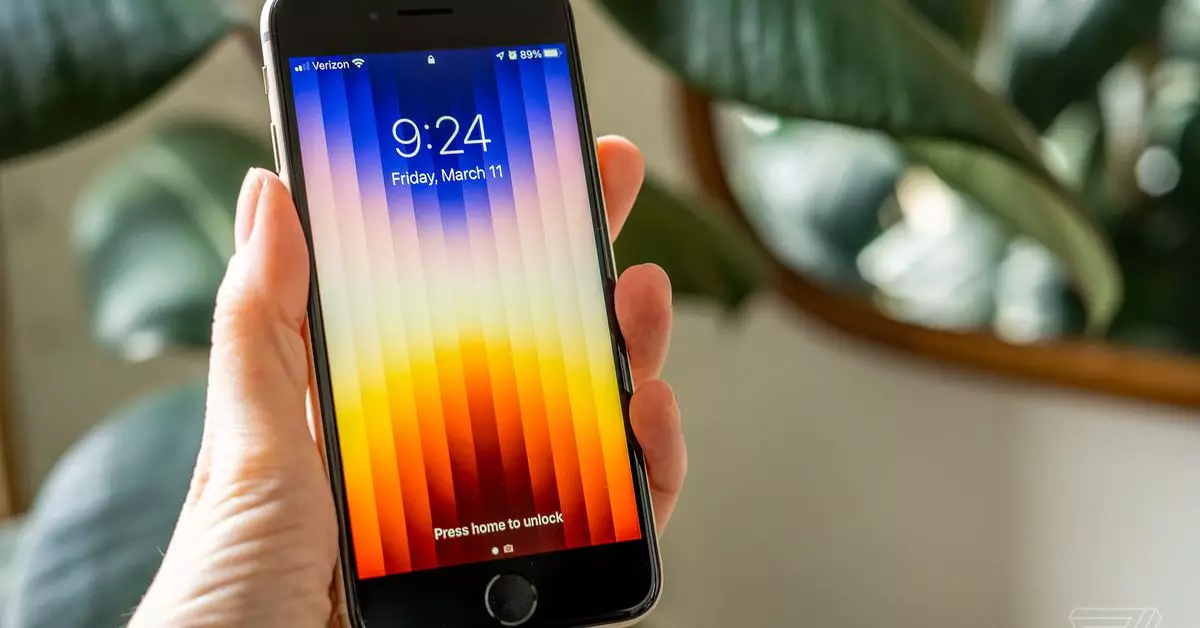The differentiation between premium and midrange smartphones has been increasingly pronounced in recent years. Consumers are bombarded with high-end models laden with features, leaving those seeking more budget-friendly options feeling neglected. This article delves into the midrange smartphone landscape, focusing on the competition between Apple and Android devices and the pressing need for Apple to revitalize its midrange offerings.
Apple’s foray into midrange smartphones has generally been met with skepticism, particularly when looking at models like the iPhone SE. Initially launched in 2016, the iPhone SE was lauded for its affordability compared to flagship devices. However, its perceived value has waned over the years, particularly with the release of the second and third generations, which bring negligible upgrades over their predecessors. The starting price for the third-generation SE at $429 is hardly a bargain when juxtaposed against increasingly competitive options available from Android manufacturers.
The iPhone SE’s screen is one of its most significant drawbacks. With a cramped LCD panel and large bezels reminiscent of a bygone era, users inevitably have to compromise on the experience. Storage limitations also loom large; an entry-level model offering only 64GB in 2024 is hardly acceptable. The most glaring oversight, however, is the absence of a night mode—an alarming deficiency given the advancements in mobile photography technology.
Android’s Rising Competence in the Midrange Market
In stark contrast, Android devices have evolved significantly in the midrange category. Take, for example, the Google Pixel 8A. Priced at $499, this phone not only offers an OLED display but also boasts an excellent camera system, substantial storage options, and seven years of operating system updates. Samsung has also contributed to making waves in this sector with the Galaxy A series, which provides attractive features, such as an OLED screen and water resistance, at competitive price points.
This escalation in quality among midrange Android devices further emphasizes the shortcomings of the iPhone SE. While Apple may have enjoyed a reputation for quality, the gap continues to widen as competing brands refine their offerings. In a market where consumers increasingly value features and specifications, Apple’s inability to provide a convincing midrange option stands out as a glaring oversight.
Despite the present shortcomings, there is a glimmer of hope for Apple in the midrange sector with speculation swirling surrounding the fourth-generation iPhone SE, reportedly set to launch in 2025. Early rumors suggest that Apple may finally pivot its approach, incorporating an OLED screen, modern design elements with slimmer bezels, and a more powerful processor. Even a modest increase in storage to 128GB would make a significant difference in perception.
What remains pivotal is Apple’s ability to innovate without over-engineering its products. There has been successful precedent in its other product lines, such as the redesigned Mac Mini. This model exemplifies the idea of “everything you need, nothing you don’t.” By stripping out unnecessary features while updating core components, Apple managed to create a compelling, functional device that appeals to budget-minded consumers.
If Apple is serious about reclaiming its foothold in the midrange smartphone market, a strategic shift will be essential. Simplifying the iPhone SE while retaining user-centric features would facilitate a return to a more favorable standing among consumers. An effective midrange device could potentially draw in experienced and new users alike, creating a greater diversification in product offerings.
Moreover, considering the current price dynamics, the average selling price of an iPhone surpassing $1,000 could prompt a reevaluation of consumer purchasing patterns. With many consumers constrained by budgets yet keen on the Apple ecosystem, a well-crafted midrange option could energize an evolving market.
Apple’s midrange smartphone strategy is at a crossroads. The stark advantages offered by Android competitors, coupled with the anticipated changes in upcoming models, present both a challenge and an opportunity for Apple. The company must recognize the demand for practical, affordable devices without compromising core Apple values. Only by focusing on consumer needs and preferences can Apple position itself advantageously in a space that is proving increasingly competitive and dynamic. The time for a redefined iPhone SE appears imminent; the question remains whether Apple will rise to the occasion.


Leave a Reply